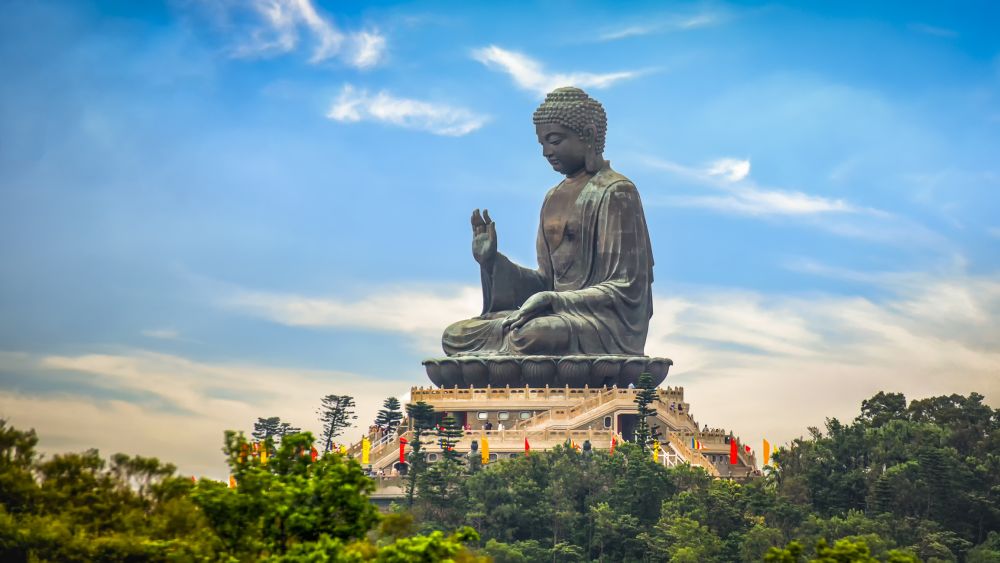

The Tian Tan Buddha, commonly known as the Big Buddha, is one of Hong Kong's most emblematic and visited attractions. Situated on Lantau Island, this majestic bronze statue has a significant place in the hearts of both local residents and global travelers. Its construction was completed in 1993, marking the start of its emergence as a major tourism destination.
The idea behind the construction of the Tian Tan Buddha was to symbolize the harmonious relationship between man and nature, people and faith. The Big Buddha is located near Po Lin Monastery and symbolizes the harmonious relationship between man and nature, people and faith. Its name, "Tian Tan," is a reference to the Temple of Heaven , or Tian Tan in Chinese, so the Buddha's base is a model of the Temple of Heaven in Beijing.
The structure stands 34 meters tall and was the world's tallest outdoor seated bronze Buddha at the time of its completion. It is an impressive example of Buddhist architecture, attracting millions of tourists and believers from around the world. The journey to see the Big Buddha involves climbing 268 steps, presenting visitors with a physically and spiritually rewarding experience.
Situated atop a mountain, the Tian Tan Buddha quickly became a pivotal catalyst for tourism in Hong Kong. It has contributed significantly to the transformation of Lanturfau Island from a relatively remote and tranquil location into a vibrant hotspot for visitors looking for a spiritual journey and panoramic views of the surrounding scenery.
Access to the Buddha was enhanced with the opening of the Ngong Ping 360 cable car service in 2006, providing an aerial route with stunning vistas of Lantau Island and the South China Sea. This subsequently boosted visitor numbers to both the Buddha and the nearby Ngong Ping Village, a cultural-themed marketplace.
The Big Buddha is not solely a tourist attraction; it is an important icon for the Buddhist community. Adjacent to it is the Po Lin Monastery, which plays a vital role in the practises and traditions of Hong Kong's Buddhist population. The statue faces north which is unique among the great Buddha statues, as most face South. It is here, amidst this serene backdrop, that visitors often partake in the cultural practices of Buddhism, creating an authentic space for religious observance.
In recent years, the tourism landscape surrounding the Tian Tan Buddha has evolved with an increasing emphasis on sustainable and culturally sensitive travel. Visitors are more mindful about the impact of their footprint on the sacred site and are encouraged to engage with the local culture and community in ways that promote preservation and respect for the environment and heritage.
Experience-based tourism, such as meditation retreats and cultural workshops, has become popular, allowing tourists to delve deeper into the spiritual and historical significance of the Tian Tan Buddha and the Po Lin Monastery.
The Big Buddha remains a must-visit destination for travelers to Hong Kong, offering a profound mix of spirituality, culture, and stunning natural beauty. It is a true testament to the rich, diverse heritage of Hong Kong and the region's continued draw as a global tourist destination.